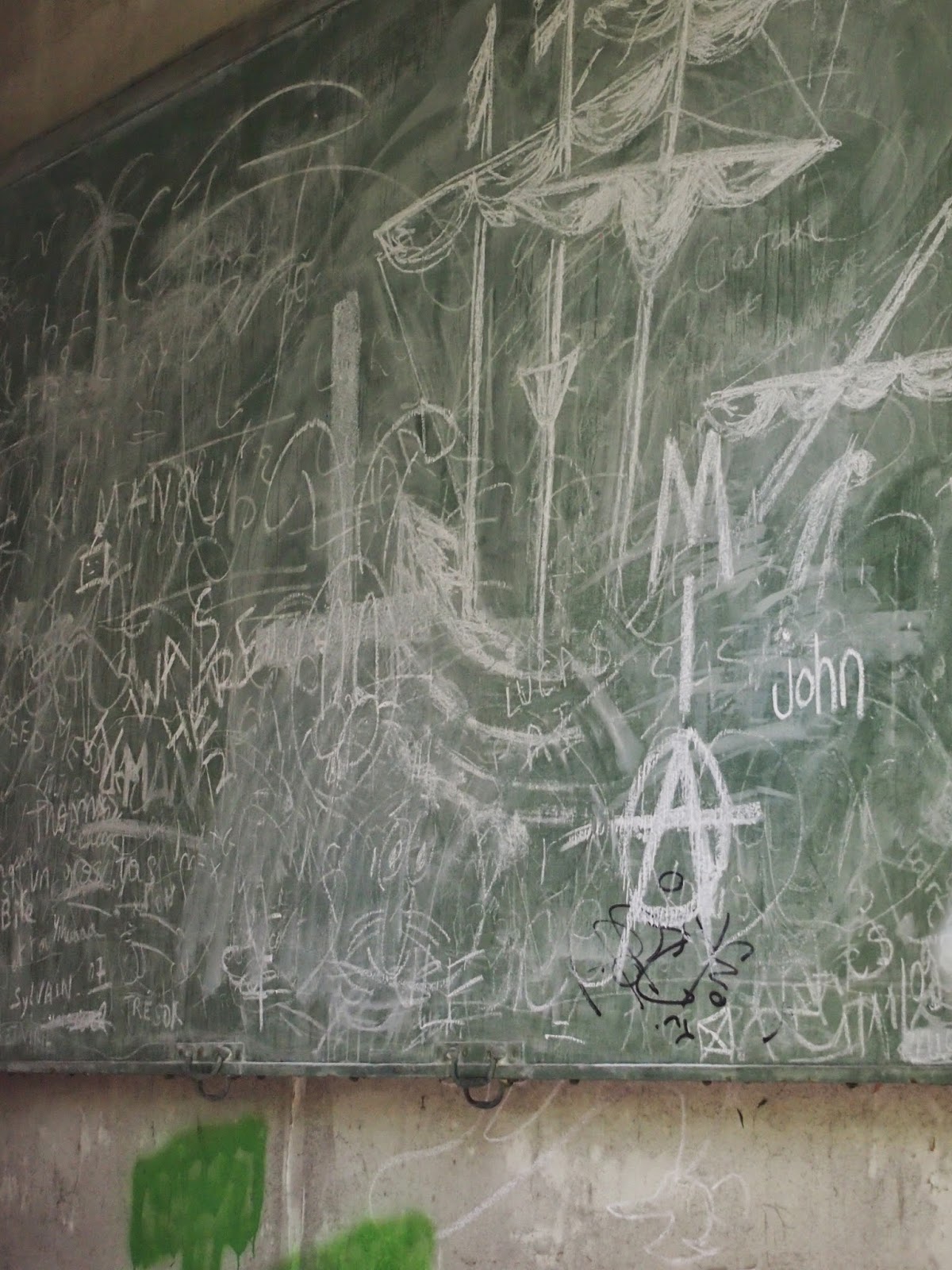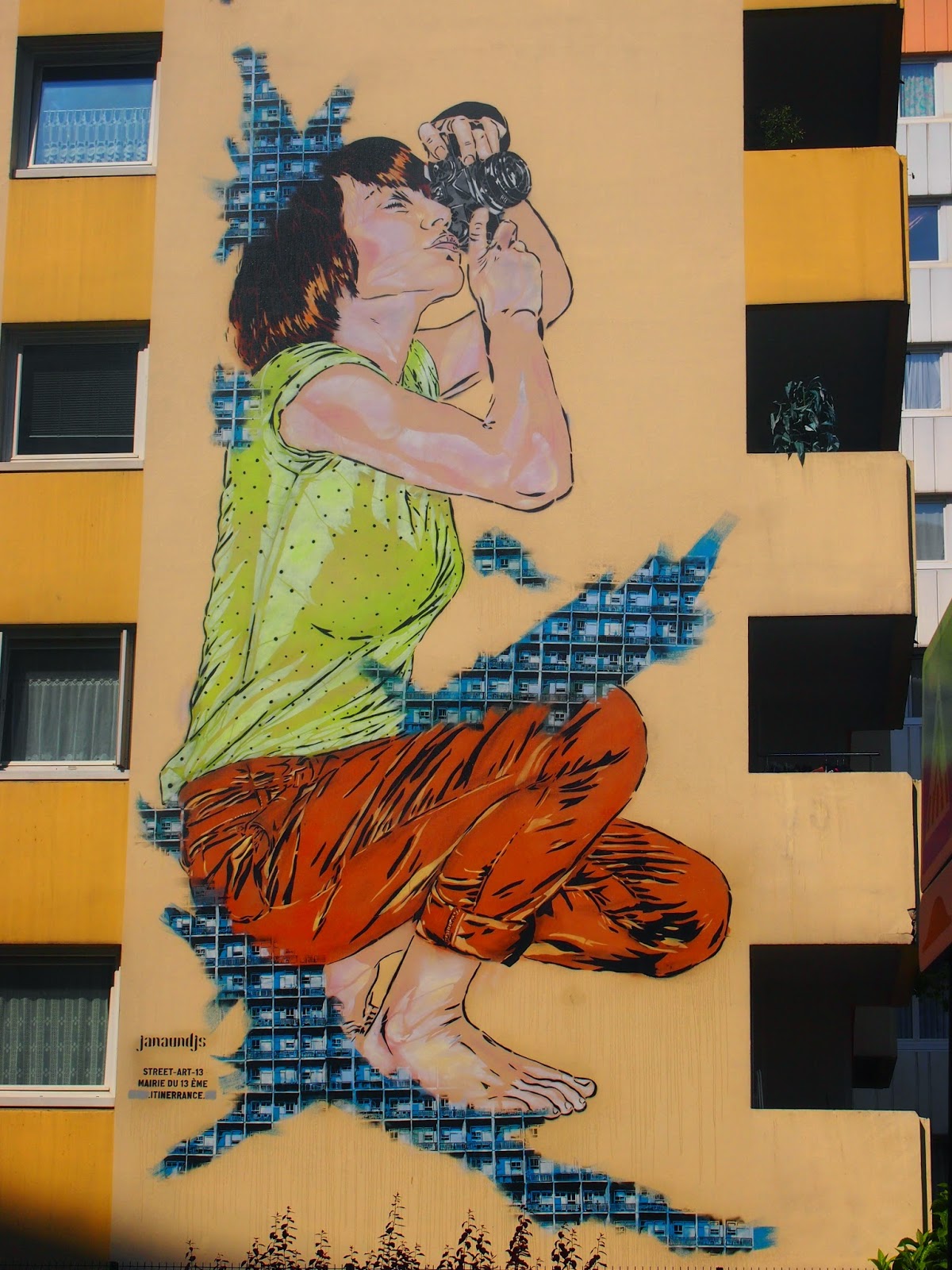
So after weeks of planning to go, but not quite managing to for one reason or another, we finally made it to the Jardin d'Agronomie Tropicale. The Jardin d'Agronomie Tropicale, aka The Human Zoo, is located just outside Paris by the Nogent-sur-Marne commune and the bois de Vincennes (in English, a suburb just outside Paris Nogent-sur-Marne, bordering the Vincennes woods). Here lie the remains of the colonial exhibition of 1907, where buildings were constructed to represent the countries under French colonial rule, Indochina, Madagascar, Congo, Sudan, Tunisia and Morocco. There are also a few other Asian elements, a bridge amongst others. These buildings were made to represent the "villages" of the countries they represented and had inhabitants shipped over to live there whilst the exhibition was open, for people to come gawk at. Hence "Human Zoo". The entrance point is shown below with a typically Chinese archway. Being surrounded by such distinctly non-Parisian architecture was beyond surreal, knowing how close we were to Paris, yet feeling hundreds of miles away was indeed unsettling. Especially when you consider what the purpose of the place was.
The first section had a very strong Asian feel to it, and for me it was especially surreal having been born in Tokyo and travelled around various parts of Asia whilst very young but barely remembering it, I kept getting these ghost inklings of a memory that I could barely grasp. Below are some pictures of the Asian "village" followed by a picture of the Indochina building, the back of the pavilion and an interior shot of one of the Tunisian buildings.

We got inside the Tunisian building fairly easily, walking through here you could clearly see how much it had fallen into a state of disrepair, and how much France don't want to draw attention to its existence.

There were also several greenhouses that housed exotic plants, one or two are still in use and the others were being potentially in the process of being revamped whilst we were there (our brief exchange with the gardener yielded little, aside from the generous permission to let us roam free inside the greenhouses).

(This another shot of the inside of the Indochina building - I am still learning how to format blogspot how I want to…).
Below: side view of a sweet little house that overlooks the veg plot, and the interior of one of the greenhouses.
Here is inside another greenhouse and the outside of another, followed by more pictures of the inside of the greenhouses.
Here are some photos from when we were wandering around the Moroccan area, which was especially "weathered".
The remains of a chair where presumably there was a fire at some point.
Below are more photos of the Moroccan pavilion, which of course we snuck into too...
This building was particularly surreal, the remains of the shower blocks and kitchen was still visible, it just astounds me that they really shipped as many as 35 000 people to places such as these in the colonial era, just for people to look at… It was even stranger to be inside the buildings, watching people walk past the windows and look in at us (obviously wondering how/why we got in and whether we were actually supposed to be there)-- I can't even imagine how it must feel to be shipped to a foreign land for the sole purpose of being watched. 1984 anyone?

Clearly at some point, as is always inevitable, other people have gotten in and made their mark.
I love being in buildings such as these, that have been left to be taken over by nature and gradually collapse. Its an odd type of beauty, and a reminder that the mark of humanity can be eradicated, eventually.
I especially adore the way the greenery completely takes over, how structures once completely man-made, are now under the control of nature.
Finally, at the end of our trail, we were met with a memorial and the back of the entrance point. This place really was stunning and very eerie. I would strongly recommend a visit if you are looking for something unusual in the Il de France region or feel in need of an escape from the Haussmannian boulevards of Paris (despite Haussmann's attempt at renovating Paris, it is somewhat claustrophobic at times). It will be well worth the trip.






























































